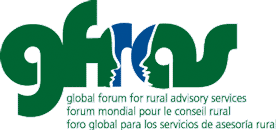 Every country has developed, formulated, and decreed national policies related to rural advisory services. Find some examples here. If you are looking for a national policy from a specific country, please use the search function, selecting the category “National policies” and the tag for the country.
Every country has developed, formulated, and decreed national policies related to rural advisory services. Find some examples here. If you are looking for a national policy from a specific country, please use the search function, selecting the category “National policies” and the tag for the country.

Research (11)
Rural Agricultural Development Innovation for Food and Nutrition Security: Findings from a Study in Tanzania
Written by Ingrid OliveiraSub-Saharan Africa remains the world’s most food-insecure region in spite of its abundant agricultural potential. In an attempt to contribute towards overcoming this problem, an agricultural development approach known as RIPAT (Rural Initiatives for Participatory Agricultural Transformation) has been developed over the period since 2006 through a series of projects in northern Tanzania.
It has for decades been anticipated by development actors that pro-poor agricultural development interventions would be the direct route to improved nutrition among smallholder farm families. However, it is difficult to find evidence that documents such linkage – partly because of poor quality evaluations, but also because it has been realised that agricultural development interventions must be designed to a much larger extent with a nutritional lens and must take into account what types of agricultural component can lead to improved nutrition. We provide research evidence of improved rural food and nutrition security following the application of the RIPAT approach.
Linking Agriculture and Nutrition Education to Improve Infant and Young Child Feeding: Lessons for Future Programmes
Written by Ingrid OliveiraAgriculture and food systems play a central role in nutrition by supplying nutritious, healthy and affordable foods. When integrated with nutrition education for behaviour change, agricultural interventions that supply diverse affordable foods from all food groups have great scope for improving young child and family diets. In 2014, process reviews were conducted in Cambodia and Malawi of food security projects that provided agricultural support and community‐based nutrition education on improved infant and young child feeding (IYCF). In both countries, household visits were carried outwithmothers/caregivers, and interviews and FocusGroupDiscussions (FGDs)were conductedwith purposively selected project stakeholders (53 in Cambodia, 170 inMalawi), including government staff from the agriculture and health sectors. Results highlight that adoption of improved IYCF practices was facilitated by participation in nutrition education and practical cooking sessions, and supportive family and community structures. Barriers faced by families and caregivers were identified, such as women's workload and lack of access to high quality foods, namely fruits, vegetables, legumes, nuts and animal source foods. Implementation challenges regarding coordination of cross‐sectoral targeting strategies and capacities of extension services to sustain community‐ based IYCF nutrition education need to be addressed to improve programme effectiveness and impact. The project lessons from Cambodia and Malawi are useful for integrated agriculture IYCF nutrition education programmes to help ensure better young child nutrition outcomes.
Integrating Nutrition in Farmer Field Schools in Eastern Africa
Written by Ingrid OliveiraEastern and Central Africa continue to face acute and chronic food and nutrition insecurity1. Combined with a high incidence of HIV, food security continues to affect the nutrition and health status of poor households. There is growing recognition of the vital importance of expanding agricultural development capacity to include nutrition objectives, particularly in agricultural extension and training. The adoption of participatory extension approaches, such as the Farmer Field School (FFS), provides additional opportunities to move agricultural development beyond productivity and yield goals to more effectively contributing to improved nutritional outcomes.
Agricultural Technology Adoption, Food Security, Poverty and Child Health
Written by Ingrid OliveiraThe three self-contained chapters of this dissertation evolves around different aspects of a Farmer Field School intervention taking place in northern Tanzania, studying the diffusion of agricultural technologies and how agriculture links to food security, poverty and child health. The intervention is called RIPAT (Rural Initiatives for Participatory Agricultural Transformation) and was funded by the Rockwool Foundation. As a consultant for the Rockwool Foundation I administered a large scale data collection for an impact evaluation of RIPAT.
All three chapters of my dissertation build on these data. The first two chapters are coauthored with Helene Bie Lilleør. A recurrent theme in this dissertation is the identification of causal effects. Since participation in RIPAT is voluntary, the data does not offer direct experimental variation which I can exploit for identification, and there exists no baseline data collected before the implementation of RIPAT I to control for selection. I pursue different identification strategies which are detailed in the three chapters. In the following, I provide a preview of the findings.
Adapting Agriculture Platforms for Nutrition: A Case Study of a Participatory, Video-Based Agricultural Extension Platform in India
Written by Ingrid OliveiraSuccessful integration of nutrition interventions into large-scale development programmes from nutrition-relevant sectors, such as agriculture, can address critical underlying determinants of undernutrition and enhance the coverage and effectiveness of on-going nutritionspecific activities. However, evidence on how this can be done is limited. This study examines the feasibility of delivering maternal, infant, and young child nutrition behaviour change communication through an innovative agricultural extension programme serving nutritionally vulnerable groups in rural India. The existing agriculture programme involves participatory production of low-cost videos promoting best practices and broad dissemination through village-level women's self-help groups. For the nutrition intervention, 10 videos promoting specific maternal, infant, and young child nutrition practices were produced and disseminated in 30 villages.
Gender and Nutrition Measurement Tools: Evaluating Their Appropriateness in the Context of Zambia
Written by Ingrid OliveiraZambia remains one of the countries with the highest levels of malnutrition on the African continent, despite increasing investment to curb the situation. Similarly, Zambia continues to perform poorly on gender equality. Evidence from the Zambian Demographic Health Survey reveals that in comparison to men, women have less education, lower literacy levels, and less exposure to mass media, which directly affects their position in their households as well as society (CSO 2015).
Indigenous Wild Food Plants in Home Gardens: Improving Health and Income - With the Assistance of Agricultural Extension
Written by Ingrid OliveiraThe wide-spread presence of home gardens, in developing nations is a strong foundation for food security, both in terms of quantity and quality. Indigenous wild food plants are a rich source of health-giving micronutrients, which are missing from highly refined fast/convenience foods the growing reliance on which has caused an ever-increasing occurrence of dietary-related diseases. A simple solution to resolving micronutrient malnutrition is the transplanting of neglected and underutilized plant species (NUS) into home gardens. These plants can also be sold in local markets providing additional family income. Agricultural extension personnel can play an influential role in promoting the transplanting process by presenting workshops for women farmers and home makers. Guidelines and resources for these workshops are given below.
Research Into Men’s Perceptions of Their Roles and Involvement in Household Decisions Around Food in Rural Bangladesh
Written by Ingrid OliveiraLike other INGENAES activities, this research activity aims toward the larger goal of building gender-responsive agricultural extension and advisory services and as a result, improving women farmers’ agricultural productivity and household nutrition. This particular project expanded the overall INGENAES focus by bringing men into the picture, specifically, looking at men’s perspective on their roles in meeting household nutritional needs and their preferences for nutrition-sensitive extension approaches. In addition, this project sought out information from men and women about gender roles and particularly transformations in gender roles taking place in rural villages that might affect nutritional outcomes.
Characterization of Nutrition Knowledge, Attitudes, and Practices amongstRural Farmers Engaged in Agricultural Extension Services in the Dry Corridor of Honduras
Written by Ingrid OliveiraPoverty is the basic cause of undernutrition and undernutrition contributes to the vicious cycle of poverty. Honduras is a low middle-income country located in Central America facing major development challenges. According to the World Bank, more than 63 percent of the population lived in poverty in 2014. Poverty disproportionately affects the rural areas, where approximately six out of 10 households live in extreme poverty, or on less than US$2.50 per day.1 Moreover food security in Honduras is threatened by high probability of tropical storms and hurricanes, droughts, floods and landslides, deforestation, and frequent mild earthquakes.
Analyzing the Gender Sensitivity of Rural Advisory Services in Bangladesh
Written by Ingrid OliveiraGender relations in Bangladesh have been undergoing a process of considerable transformation over the past thirty years as part of a broader process of economic transition and societal change. Women farmers made up 40 percent of the total agricultural labor force in 2010, with a 7 percent growth in women’s participation in agriculture between 2005 and 2010 (Akter et.al., 2015). Evidence shows that the wage difference between men and women in agriculture decreased from 40% to 30% for the year 2011/12 to 2013/14, which can be taken as a positive change (FPMU, 2015; BBS Monthly Bulletin, 2015), although the gap is still very high. Despite such progress, Bangladeshi women are still primarily considered to be unpaid family labor (56.3% of women in the labor force), and their contributions to agriculture are not fully recognized, neither in the household and communities nor at the national level (SFYP, 2015).
More...
Analysis of Indicators and Measurement Tools Used in Zambia to Assess Impact of Agricultural Extension Programs on Gender Equity and Nutrition Outcomes
Written by Ingrid OliveiraIn Zambia, investment in agricultural extension with a focus on gender equity and nutrition outcomes has been increasing, and in the last decade, several organizations have replicated projects in different geographical areas. However, with persistent high prevalence of malnutrition and micronutrient deficiencies still being recorded especially among children below the age of five, it is either these initiatives have little impact on reducing malnutrition, they are not sufficient, the correct programs are not being implemented, and/or the methods used to measure the impact may be inappropriate.

